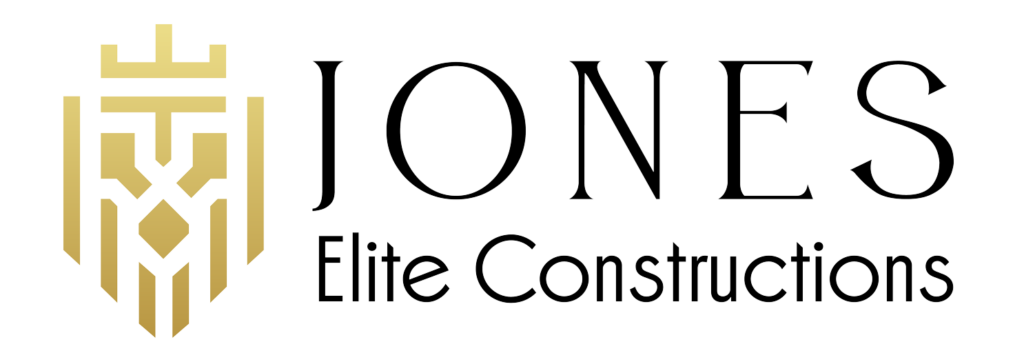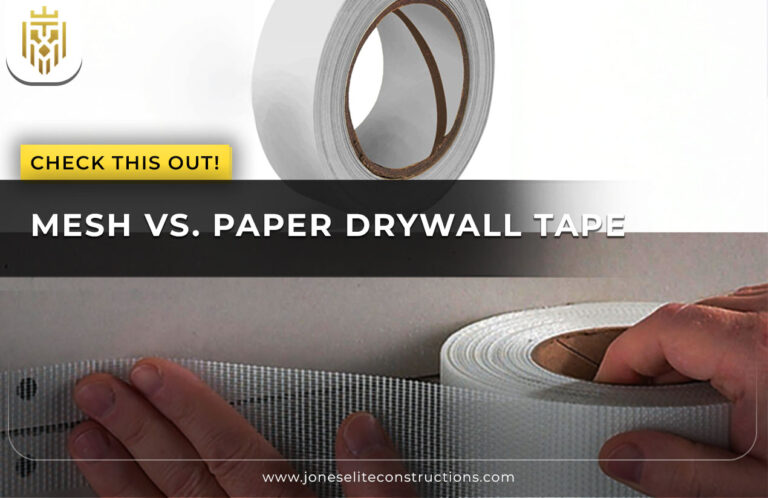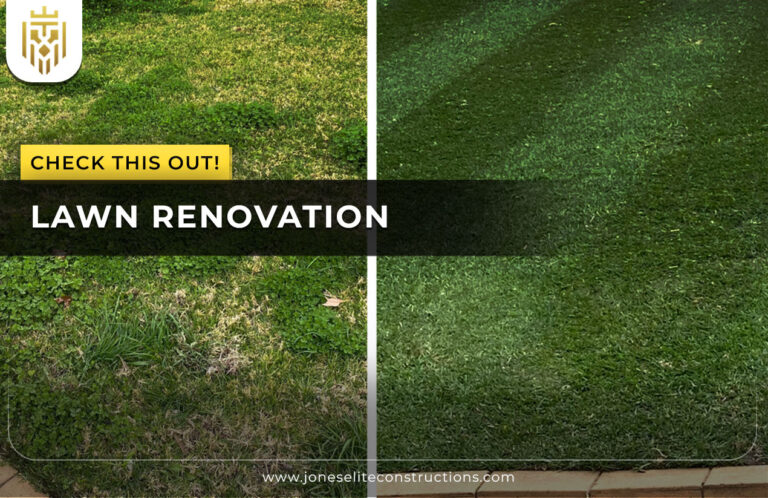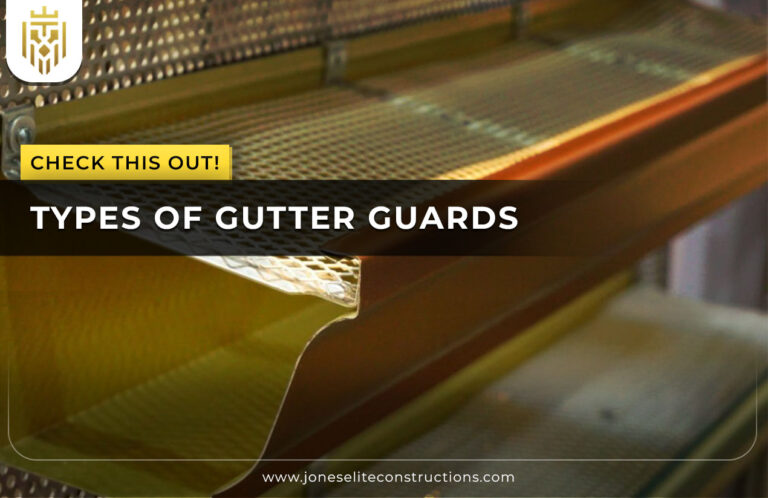What Is Mesh Drywall Tape?
Mesh drywall tape is an auto-glued fiberglass tape that is used to cover drywall seams efficiently. It also eliminates pre-bedding in compound, so it is faster to apply than paper tape. Wall construction contractors like it for wall repair due to its simplicity and smooth finish, especially when it comes to minor patches or areas that are susceptible to stress.
Pros of Mesh Drywall Tape
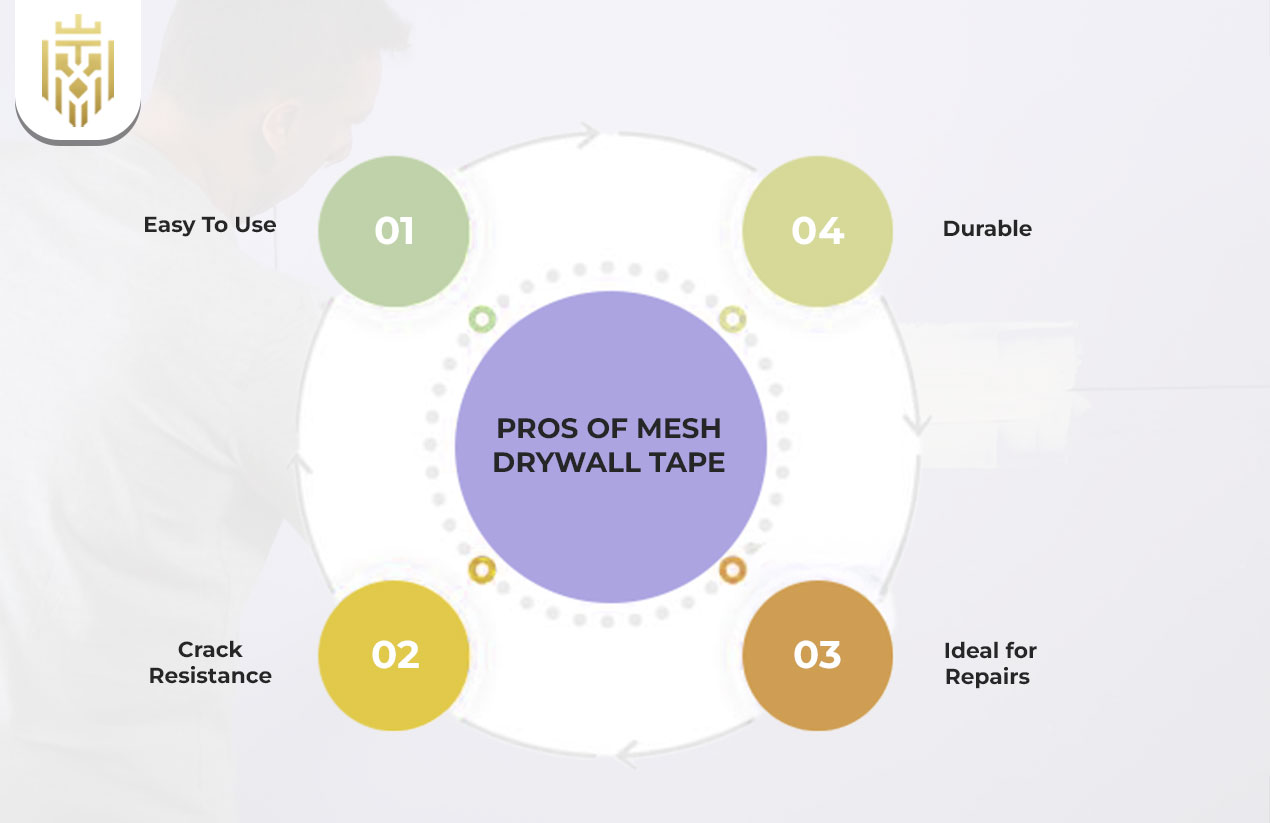
Mesh tape is appreciated due to the ease of application, resistance to cracks, and the ability to use it in wall repair. It sticks on the drywall without pre-mudding, and thus it is faster than paper. Contractors often prefer it when choosing drywall tape for walls requiring faster installation and flexibility.
Easy To Use
The simpleness of mesh tape is its largest benefit. It can also be applied without a base coat of compound since it is self-adhesive. This aspect makes it beneficial in following a drywall tape instruction and enabling even amateurs to save time and also provide a smoother finish to flat joints.
Crack Resistance
Mesh drywall tape is more resistant to the cracks of flat seams when used correctly. Its material is made of fiberglass, which is flexible and will not break under pressure. This makes it one of the best tapes for drywall seams where high movement or shifting walls occur, ensuring stronger bonding that maintains the overall finish of the drywall surface.
Ideal for Repairs
Mesh drywall tape is better in the case of wall repair work since it does not easily bubble and tear. It sticks to drywall sheets without strain, and therefore, it is easy to use when repairing holes and cracks. The fact that it can be quickly applied deems it a favorite among homeowners who require instant results with little use of compound.
Durable
The use of fiberglass in the construction provides mesh drywall tape with high durability. It is strong in bonding throughout the years and particularly in maxims that are most likely to suffer stress or vibration. Professionals often choose it when choosing drywall tape for walls that need to withstand frequent wear and tear without breaking down, making it a long-lasting finishing option.
Cons of Mesh Drywall Tape
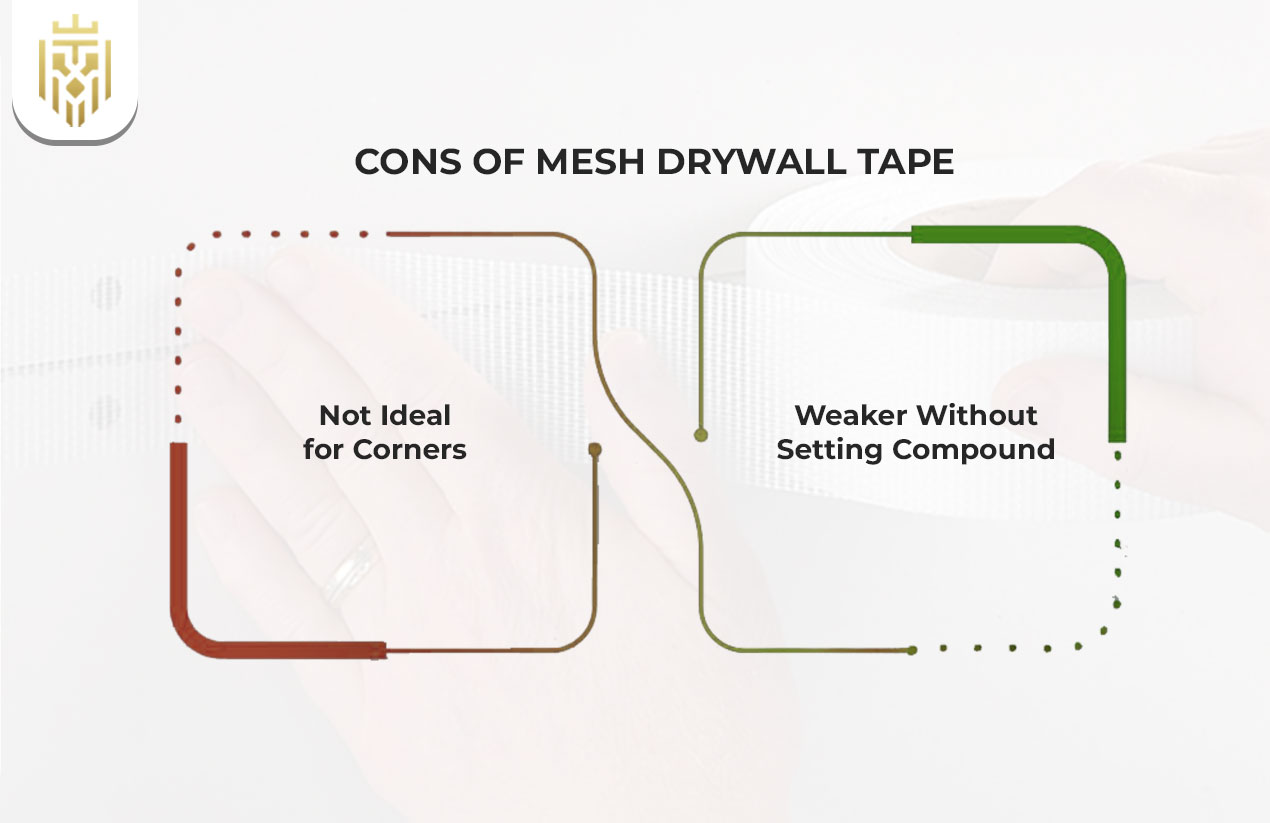
Although convenient, mesh drywall tape is weaker without setting compound and has problems with corners. In the mesh or paper drywall tape discussion, paper is usually favored for angles and long-term strength, while mesh is better suited for quick fixes.
Not Ideal for Corners
Joint tape consisting of mesh material works well on flat seams, but in corners, it does not work well. It does not flex as much as the paper ones and hence has uneven finishes. In the case of inside corners, paper tape is the better option, as it offers a cleaner corner and avoids cracking at the intersection of two drywall panels.
Weaker Without Setting Compound
Mesh drywall tape should be used with a setting type of joint compound to build the maximum strength. In its absence, the bond is weak and it cracks easily. This is a key disadvantage in the mesh or paper drywall tape debate since paper tape maintains reliable adhesion even with all-purpose compound, while mesh demands the stronger setting mix.
What Is Paper Drywall Tape?
Paper drywall tape is a non-adhesive tape typically constructed of heavy paper that is used to cover the seams in drywall with joint compound. It is applied into a mud layer, but once it is laid, it develops a solid bond. Most builders use it in long-term projects where durability and stability are crucial in achieving the perfect finish to the wall.
Pros of Paper Drywall Tape
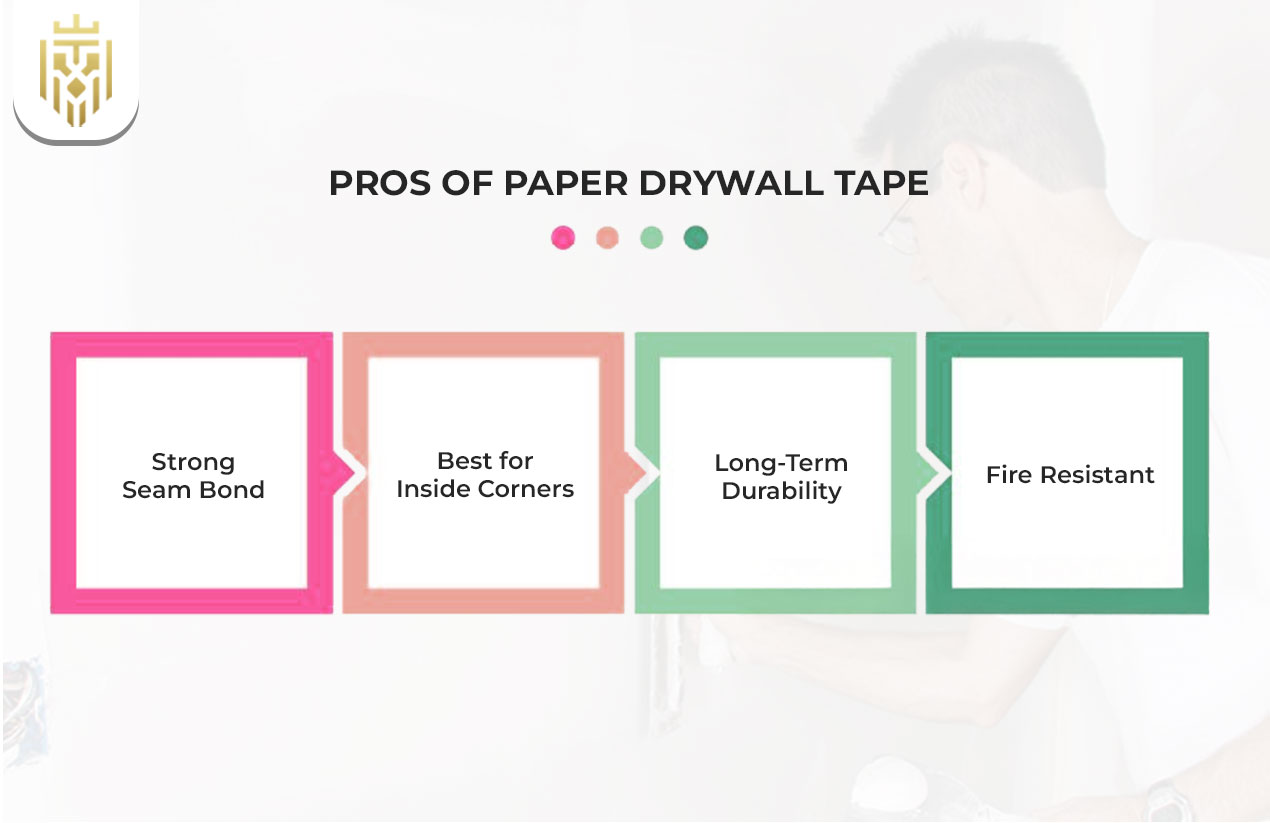
Paper drywall tape is used to offer better bonding and sharp corner finishing as well as high quality and extended life. It is often highlighted in paper drywall tape pros and cons comparisons for its fire resistance and long-term performance, making it the best tape for drywall seams in larger projects requiring structural reliability.
Strong Seam Bond
When properly incorporated in the joint compound, paper tape forms a remarkably good bond. It is also suitable for heavy-duty finishing, thus making sure that the seams of the drywall are smooth and strong. It is often highlighted in paper drywall tape pros and cons discussions as the go-to choice for projects requiring maximum structural integrity across flat and corner joints.
Best for Inside Corners
Whereas mesh is hard to bend, paper tape can bend easily where it is needed in inside corners. This is a property that makes sure there are sharp finishes and eliminates cracks where two panels are joined. Professionals consider it the best tape for drywall seams when finishing corners that require precision and strength without additional reinforcement materials.
Long-Term Durability
Paper tape is a good long-term performer. It does not fray or grow weaker as the years go by, and so it has a sure hold decades long. This makes it an excellent option when choosing drywall tape for walls in permanent structures where minimal maintenance and reliable finishing are the top priorities for homeowners or builders.
Fire Resistant
Paper tape provides some fire resistance capability, not available in mesh fiberglass products. Although it does not replace fire-rated drywall, it improves the safety where drywall seams are covered in places with high risks. When a greater safety margin must be achieved, as well as performance, such as in commercial or residential wall assemblies, contractors tend to favor it.
Cons of Paper Drywall Tape
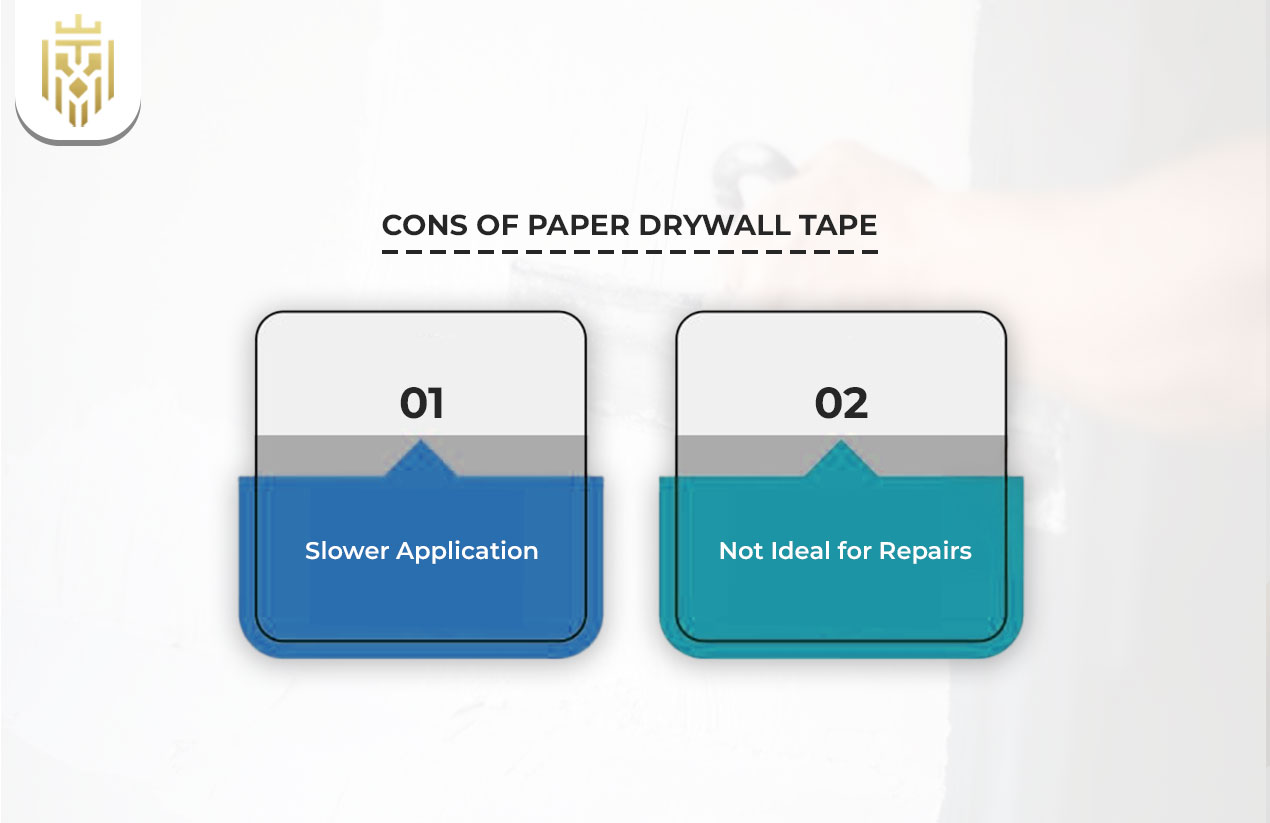
Paper tape is not as fast as the other ones and has to be embedded in a joint compound. During wall repair or on irregular surfaces, it may tend to bubble, and in such a situation, mesh will prove more useful. The drywall paper tape vs. mesh dilemma brings out the durability of the paper but the speed and simplicity of the mesh.
Slower Application
Paper tape is also slow because it needs a joint compound to be applied first before being applied. This is less efficient as compared to mesh tape, particularly in quick jobs. Contractors involved in tight deadlines frequently are not using paper and prefer more speed over maximum seam strength and stability.
Not Ideal for Repairs
Paper tape is not suitable for small patches or fast repair of the wall. When it is put on uneven surfaces, it tends to be bubbled or to lift. During the drywall paper tape vs. mesh argument, the mesh is the winner in the repair category, whereas the paper works better in bigger projects and long-term durability needs.
Mesh vs. Paper Drywall Tape
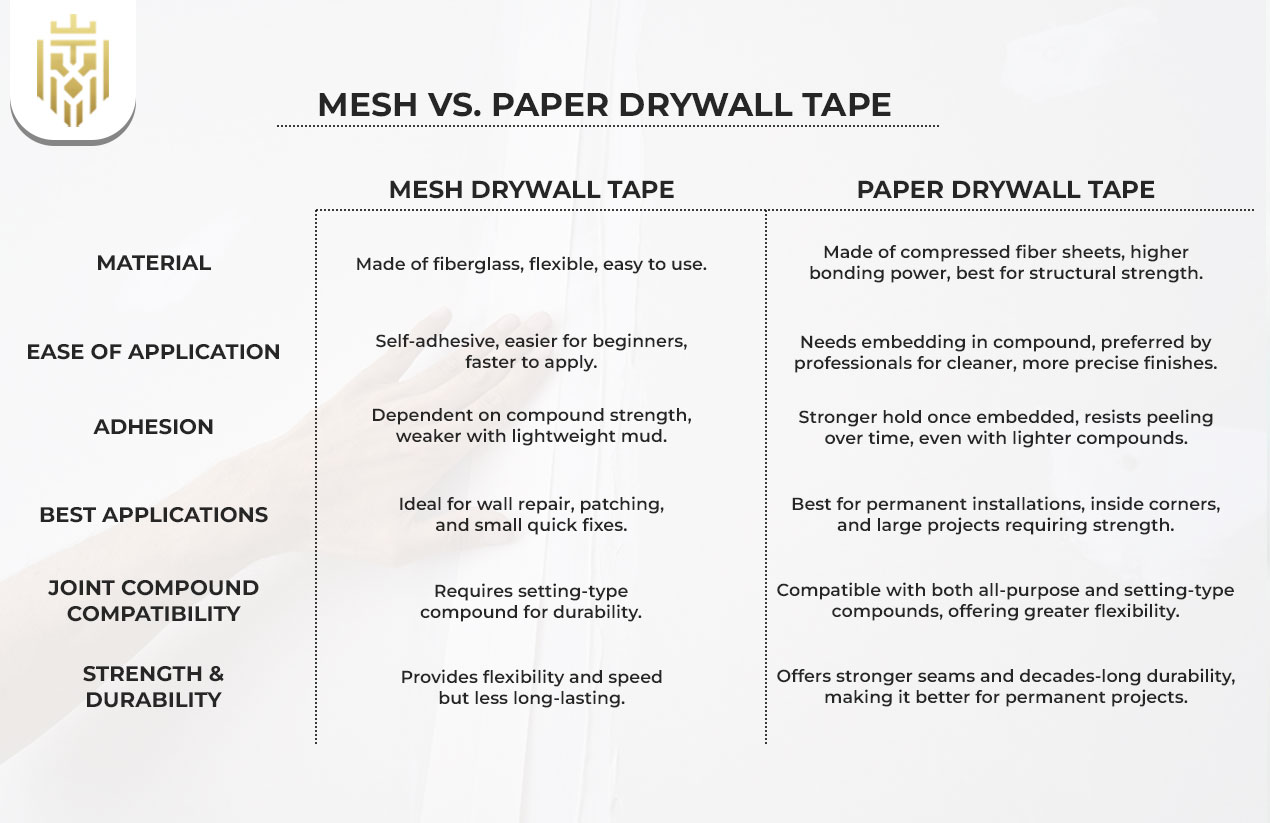
The mesh vs paper drywall tape comparison shows mesh offers speed and ease, while paper ensures long-term strength. Mesh is perfect in small repairs and quick work, whereas paper is good in permanent installations, corners, and huge projects that need stronger joint tape bonds.
Material
The key difference in mesh vs paper drywall tape lies in construction. Mesh is made using fiberglass, and paper is made with compressed fiber sheets. Fiberglass is slightly flexible and easy to use, and paper has the highest bonding power and therefore is recommended in all vital structural sections where the drywall joints require maximum support against movements.
Ease of Application
Mesh tape is also easier to apply, as it is self-adhesive, whereas paper needs to be embedded in a compound. New contractors to drywall tend to use mesh because it is easy. But in the paper vs mesh drywall tape comparison, professional finishers prefer paper to apply more controlled and cleaner finishes, particularly in any section where high accuracy is required.
Adhesion
Mesh tape is dependent on the strength of the compound, whereas paper bonds better after being embedded. This is to say that paper gives a stronger hold on time. In the mesh or paper drywall tape decision, adhesion plays a key role, as paper resists peeling better than mesh, especially when only lightweight joint compounds are used.
Best Applications
Mesh tape does well at repairing, patching, and quick fixes on walls, and paper tape prevails in large-scale applications. Contractors often evaluate the paper drywall tape pros and cons before deciding which material suits best, balancing speed against structural reliability to ensure each wall section maintains strength and a professional finish.
Joint Compound Compatibility
Mesh needs more setting-type compound, and paper is compatible with all-purpose mud. This compatibility aspect renders paper more flexible in projects that require flexibility of compounds of choice. Drywall tape installation guides and other guides such as this highlight this difference, as they help contractors to prevent weaknesses that are caused by using incorrect combinations of materials.
Strength & Durability
Paper tape offers greater strength on drywall seams and does not separate throughout decades, whereas mesh is aimed at flexibility and expediency of application. The comparison between drywall paper tape and mesh reveals that paper can last longer than fiberglass in most cases, particularly where durability is concerned more than speed, which makes it a better choice when it comes to permanent projects.
Tips to Choose Between Mesh and Paper Drywall Tape
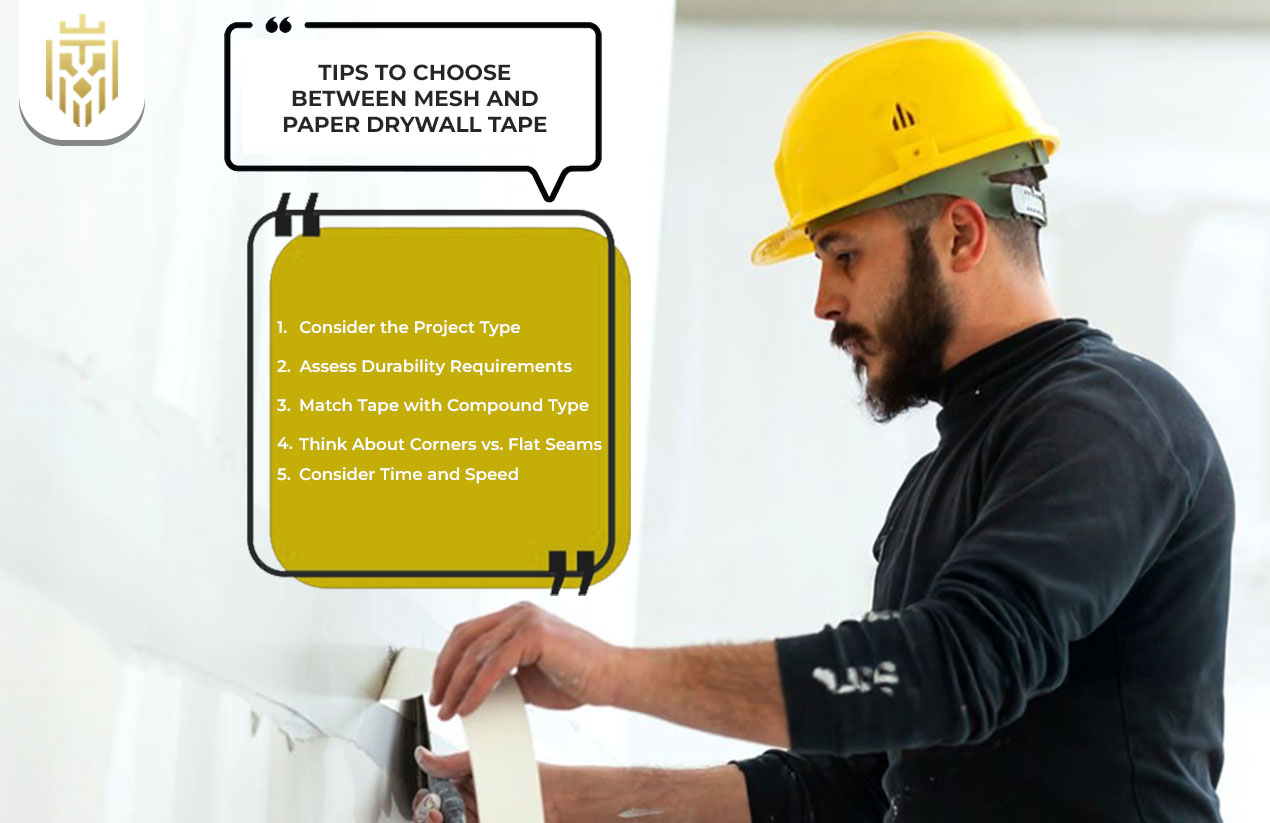
When choosing drywall tape for walls, consider project size, durability needs, and speed. Quick wall repairs or patches can be done with mesh, and bigger seams and corners should be done with paper. Strength and efficiency are balanced in a way that makes sure that the seams of the drywall are quite solid and finished.
Consider the Project Type
Paper is typically chosen to install in large quantities, whereas the mesh is preferred for quick repair projects on the wall. The scope is important to gauge because you do not lose strength or speed. This is why choosing drywall tape for walls based on project size remains an essential step for achieving professional finishing results consistently.
Assess Durability Requirements
In the event of longevity, paper tape is more conducive to good bonding. Mesh is suitable for short-term or fast work. Considering the pros and cons of paper drywall tape helps ensure durability requirements are met, especially in environments where stress and movement might otherwise cause seam cracking.
Match Tape with Compound Type
It is important to match the type of tape with the compound type. Mesh needs to be set in a compound, whereas paper is used with most. A drywall tape installation guide has pointed out this compatibility problem, and it assists builders to create strong bonds. The wise selection is to ensure that your seams are solid with no cracking or weakening of the structure of your complete walls in the future.
Think About Corners vs. Flat Seams
Paper tape is needed on corners to make sharp finishes, and mesh can be used on flat seams. Joint tape should be examined based on wall design in order to prevent structural failures. This is especially crucial in multi-room projects where corner sharpness and strength of seam bond are equally important in creating durable outcomes.
Consider Time and Speed
Mesh tape is faster and easier than tape when there are deadlines. Nevertheless, paper tape is still unsurpassed when accuracy and durability are considered. Balancing speed and quality is the real challenge in the mesh vs paper drywall tape debate, helping contractors achieve the best results depending on project constraints.
FAQs
1) What is the difference between mesh and paper drywall tape?
The primary distinction is between material and use—mesh tape is fiberglass and self-adhesive, whereas paper tape should be embedded, which provides more robust seams and is more effective at corners.
2) Which type of drywall tape is more durable?
In the mesh vs. paper drywall tape debate, paper is generally more durable. It does not crack easily over time, and mesh can be used to repair the walls faster but requires a more robust compound to survive.
3) Which drywall tape works best for corners?
Paper tape is best used in corners, as it folds easily, providing sharp edges and good bonds. During drywall paper tape versus mesh, mesh does not have the capability of producing sharp corner finishes.
4) How to Choose Between Mesh and Paper Drywall Tape?
When choosing drywall tape for walls, use mesh for quick patches and wall repair jobs, but select paper tape for large seams, inside corners, and projects needing long-term strength and stability.
5) What kind of mud should be used with mesh tape?
The drywall tape installation guide suggests using setting-type mesh tape joint compound. Mud that is all-purpose is not strong enough, whereas paper tape can be used with setting and all-purpose compounds.
